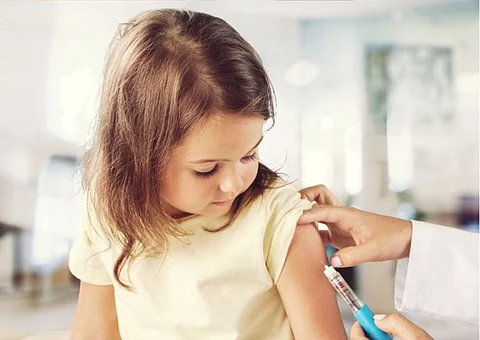EHS measures in UAE schools are being strengthened to create safer, healthier learning spaces for students across the Emirates. The Emirates Health Services (EHS) has announced new guidelines designed to curb the spread of infectious diseases in educational institutions. With the school year in full swing, these steps highlight the UAE’s commitment to protecting students, teachers, and staff while maintaining uninterrupted education.
Why EHS Measures in UAE Schools Matter
Schools are environments where children and staff spend long hours together in close proximity, making them particularly vulnerable to the transmission of illnesses. Seasonal flu, respiratory infections, and other communicable diseases often spread quickly in such settings. Recognizing this, EHS has introduced a comprehensive framework that emphasizes prevention, early detection, and effective response.
These measures are not just about minimizing sickness; they are about maintaining overall public health, reducing absenteeism, and ensuring that students continue learning without disruption.
Key Measures Introduced by EHS
EHS has outlined several practical steps that schools must implement to curb disease spread. These steps are aimed at creating a safer environment while teaching children healthy habits.
- Enhanced Hygiene Practices
Schools will ensure that proper handwashing facilities are available, and students are encouraged to wash their hands regularly. Sanitization stations will be placed in classrooms, cafeterias, and playgrounds. - Regular Cleaning and Disinfection
Classrooms, buses, and common areas will undergo frequent cleaning with approved disinfectants. High-touch surfaces like doorknobs, desks, and handrails will be sanitized multiple times daily. - Health Screenings and Monitoring
Teachers and staff will monitor students for symptoms such as fever, cough, or fatigue. Any suspected cases will be referred to health authorities promptly to prevent further spread. - Vaccination Campaigns
EHS is promoting awareness about flu vaccines and other essential immunizations. Campaigns in collaboration with schools aim to improve vaccination rates among students and staff. - Awareness Programs
Educational sessions for students, parents, and teachers will be conducted to promote healthy practices, including proper nutrition, hygiene, and the importance of staying home when unwell. - Improved Ventilation
Classrooms will adopt better ventilation systems to ensure clean airflow and reduce the risk of airborne disease transmission.

Building a Culture of Health in Schools
The EHS measures in UAE schools go beyond rules and protocols; they encourage schools to foster a culture of health and wellness. Students are being taught to take personal responsibility for hygiene, such as covering their mouth when coughing or sneezing, and avoiding close contact when sick.
Teachers also play a central role in this culture shift. Training programs will equip them to recognize early signs of illness and educate students about preventive habits in everyday life.
Parental Involvement is Key
EHS has emphasized that parents must be active partners in keeping schools safe. By ensuring children are vaccinated, sending them to school with proper hygiene supplies, and keeping them home when they are unwell, parents directly support the success of these measures.
The collaboration between home and school is vital because many diseases are brought into classrooms from outside environments. By aligning efforts, EHS, schools, and families can significantly reduce risks.
Technology’s Role in Prevention
Digital solutions are also being integrated into the EHS measures in UAE schools. Health tracking apps and communication platforms will allow schools to quickly notify parents about outbreaks or health advisories. This real-time communication ensures that families can take immediate action if necessary.
Some schools are also experimenting with digital attendance and health monitoring systems to detect early warning signs and minimize exposure risks.
Long-Term Benefits of the New Measures
While the immediate goal of the new EHS measures is to reduce disease outbreaks, their long-term benefits are equally important. Healthy students are more attentive in class, have fewer absences, and perform better academically.
Additionally, the focus on hygiene and preventive care will instill lifelong habits in children. By learning the importance of vaccinations, hand hygiene, and responsible behavior during illness, the next generation will grow up more health-conscious.
Aligning with UAE’s Public Health Vision
These EHS measures in UAE schools are part of the wider national health strategy that aligns with the UAE Vision 2031. The vision focuses on building a strong healthcare system, improving the quality of life, and ensuring that preventive healthcare becomes a priority.
By targeting schools, the government is addressing one of the most important sectors where public health measures can make a profound impact. A healthier school population contributes directly to healthier communities.
Voices from the Education Community
Teachers, school leaders, and parents have welcomed the new measures with optimism. Many educators believe that clear guidelines from EHS give them the confidence to manage their classrooms better. Parents, on the other hand, feel reassured that their children’s safety is being prioritized in a structured way.
Several students themselves have expressed a positive response, enjoying the hygiene activities introduced in class and learning about the importance of staying healthy.
Challenges in Implementation
While the measures are promising, challenges remain. Ensuring consistent implementation across hundreds of schools is a major task. Some institutions may face resource constraints, particularly when it comes to upgrading ventilation systems or hiring additional cleaning staff.
EHS has acknowledged these challenges and promised ongoing support and monitoring to ensure compliance. Schools will also be provided with training materials, resources, and guidance to overcome these obstacles.
Looking Ahead: The Future of Health in UAE Schools
The introduction of these EHS measures in UAE schools is not just a short-term response but a step towards long-term resilience. Future plans may include the introduction of regular health audits, integration of telemedicine in schools, and stronger partnerships with healthcare providers.
As the world continues to face evolving health challenges, such as seasonal viruses and potential new outbreaks, the UAE’s proactive approach positions its education system as a model for health and safety.
Conclusion
EHS measures in UAE schools represent a proactive, community-driven effort to safeguard the health of children, teachers, and families. By focusing on hygiene, vaccination, awareness, and technology, these initiatives aim to reduce the spread of diseases while promoting healthier lifestyles.
The combined efforts of EHS, schools, parents, and students show that health and education can work hand in hand. With these new strategies, the UAE is building not only safer classrooms but also a healthier and more resilient society.
Do follow us: Instagram
Read More: 7 Positive Ways the Saudi Arabia Lifestyle Is Changing Fast



